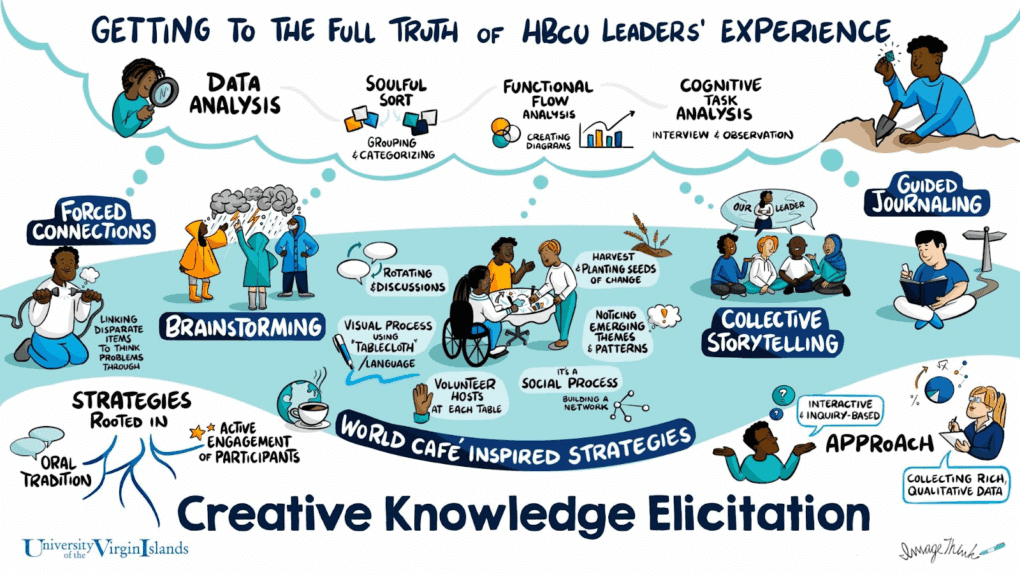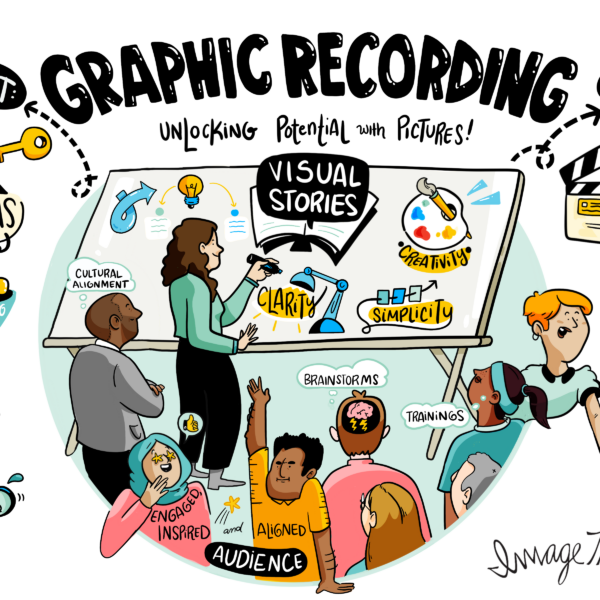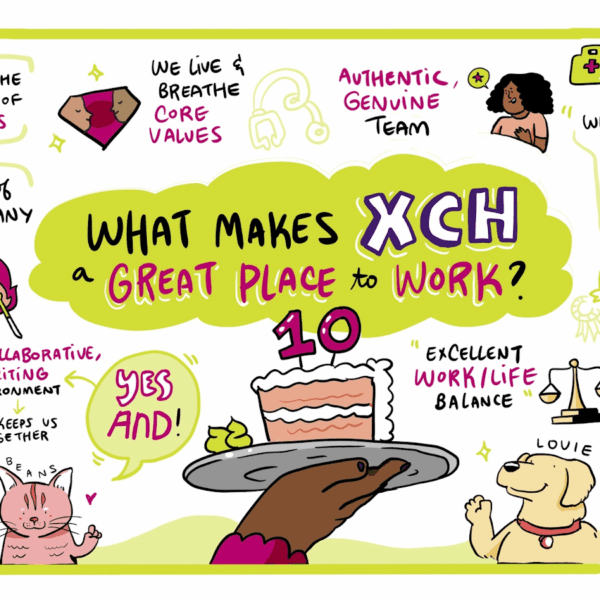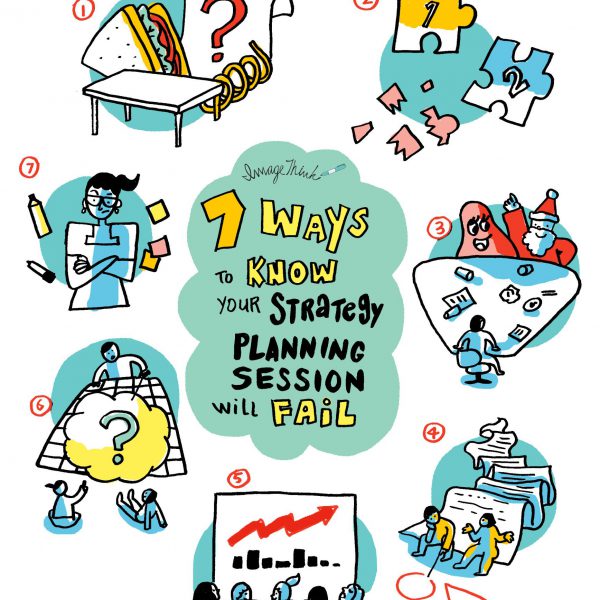At ImageThink, we’ve spent over a decade inside boardrooms, planning sessions, and C-suite retreats of the world’s most ambitious organizations. If there’s one thing we’ve seen consistently: brilliant strategies often fail—not for lack of good ideas, but because no one can see them.

Strategy Doesn’t Fail Because It’s Wrong—It Fails Because It’s Invisible
When leaders tell us, “Our strategy is sound, but execution’s lagging,” we ask: What does your team actually see when they hear that strategy?
If it’s a 40-page deck or an unread binder, we already know the answer.
What Does It Mean to Visualize Strategy?
Visualizing strategy means taking the abstract—goals, initiatives, KPIs—and making them visible, tactile, and interactive. It’s the difference between telling people where they’re going and showing them the map.
At ImageThink, we define this as combining strategic frameworks with visual storytelling—so leaders don’t just explain the plan; they illustrate it. And teams don’t just read strategy—they see themselves in it.
Storytelling Isn’t Extra—It’s Essential to Strategy
Behind every successful strategy is a compelling story. Without a narrative arc—what we’re working toward, what’s at stake, and what change looks like—strategy remains abstract and impersonal.
Visual strategy helps leaders craft and communicate that story clearly and compellingly:
- Where are we starting from?
- What’s the challenge we face?
- What are the big moves that will define our success?
- What role does each individual or team play?
By turning these answers into visual metaphors, shared language, and strategic imagery, we give people a way to emotionally connect to the mission—and understand their part in making it real.
The Strategic Power of Visualization
Imagine a five-year roadmap outlined in text. Now imagine that same strategy distilled into a wall-sized visual: priorities represented as icons, pathways between departments color-coded, open spaces inviting team input.
Suddenly, the plan becomes more than words. It becomes a shared visual language that sparks collaboration, reveals connections, and aligns teams with purpose.
Research backs it: people retain up to 65% of visual information three days later, compared to just 10% of text.
Why Visual Strategy Works (When Documents Don’t)
Visualizing strategy helps teams:
- Anchor complex ideas in mental images.
- Create shared ownership through interaction.
- Drive clarity and alignment across silos.
- Transform plans into story-driven experiences.
This isn’t art for art’s sake. It’s applied neuroscience and business storytelling. We’re tapping into how the brain is wired to make meaning—and remember it.
See Your Strategy—Before You Roll It Out
Cross-Functional Impact: Where Visualization Transforms Strategy
While leadership offsites are a powerful place to start, strategic visuals drive alignment across:
- Operations: Surface interdependencies and bottlenecks.
- HR & Talent: Align development programs with culture and values.
- Sales & Marketing: Create go-to-market strategies your teams remember and rally around.
- Innovation & R&D: Visualize bold ideas to move them from whiteboard to launchpad.
Watch below to learn more about some use cases for using strategic visuals –
Best Practices for Visualizing Strategy
Want to build visual strategy that aligns and inspires? Start here:
- Keep It to One Page: The best visuals are easily digestible.
- Illustrate the Why: Show the story behind the strategy.
- Use Metaphors: Boats, bridges, trees—visual anchors create shared meaning.
- Make It Participatory: Invite your team to co-create, annotate, prioritize.
- Digitize the Outcome: Strategic visuals should live beyond the room and evolve as you do.
Real Stories, Real Impact
⁕ University of the Virgin Islands – CASL Program
The Center for the Advancement of Student Leadership (CASL) was pioneering “creative knowledge elucidation”—a methodology surfacing the lived experiences of HBCU leaders—but struggled to articulate its value beyond academia.
ImageThink worked with CASL to visualize their process, clarifying the narrative and impact of their work in a single strategic visual. The result? A powerful storytelling tool that CASL now uses to engage funders, align stakeholders, and elevate their message at national conferences.

⁕ BMW Financial Services
We helped BMW FS engage both associates and managers in co-creating a strategic visual map of growth drivers—shifting their planning session from top-down to cross-level alignment. What emerged was not just a roadmap, but a shared vision.
⁕ Life Sciences Sales Team
To support ambitious sales targets, a VP led their national team through a metaphor-driven strategy session. The result was a powerful visual of a boat setting sail—charting goals, risks, and roles. That metaphor became a north star for onboarding, performance, and morale.
⁕ Bowdoin College
Faculty and IT teams at Bowdoin needed to align on research computing strategy. Visualizing their future state allowed them to identify capability gaps, foster collaboration, and gain traction on long-term goals—fast.
⁕ Global Non-Profit – GI-TOC
Faced with complex international collaboration, the Global Initiative Against Transnational Organized Crime used real-time visual strategy to distill dense research into one cohesive narrative. Their stakeholders walked away not just informed—but aligned and mobilized.
Each story proves the same principle: when people can see the story of strategy, they can believe in it—and act on it.
The Future of Strategic Visualization
As digital platforms and AI evolve, the next chapter of strategic visualization will be adaptive and intelligent:
- Interactive maps with real-time KPI overlays.
- AI-assisted visual summaries from strategy sessions.
- Seamless hybrid workshops that blend live drawing with digital dashboards.
But regardless of the tools, the heart of the work remains the same: translating complexity into shared understanding—and shared ownership.
Final Thoughts: Turning Vision Into Action
A strategy isn’t just a plan. It’s a story about the future your organization is trying to create.
When leaders visualize that story—when they bring teams into it with clarity, color, and meaning—strategy stops being an intellectual exercise and starts becoming a movement.
At ImageThink, we’ve seen this transformation happen across industries, cultures, and leadership styles. And we know one thing for sure:
When people see strategy, they step into it.
Ready to visualize your story?
Let’s talk about how ImageThink’s visual strategists can help your team turn vision into action—and strategy into a story people believe in.




